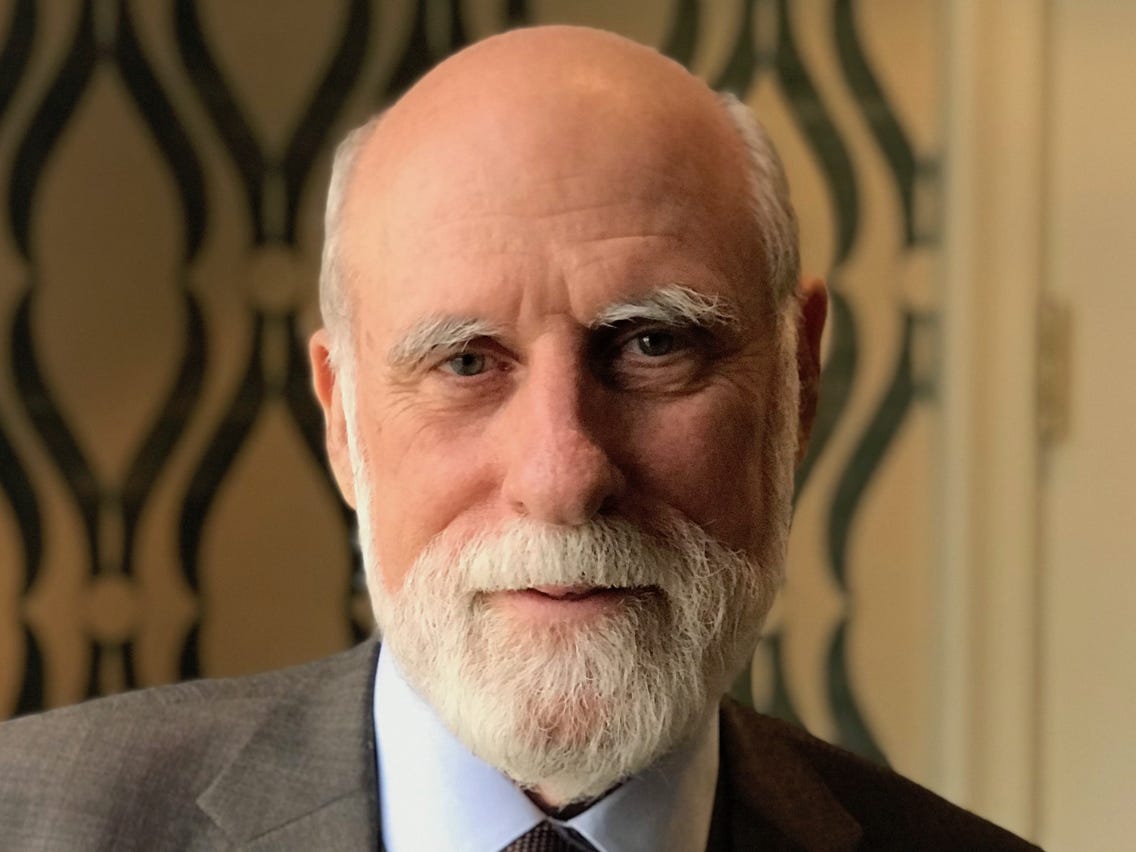
Widely known as one of the "Fathers of the Internet," Vint Cerf is a pioneering computer scientist who helped launch the world wide web. In 1973, while working as a professor at Stanford University, Cerf and a team member began the design of a revolutionary TCP/IP protocol suite, which essentially allows electronic devices to transmit data over long distances. In essence, Cerf was a co-designer of the architecture for the modern-day Internet.
Since then, Cerf has worked with many scientific associations and helped them develop and enhance their efficiency. He has also served as chairman of the board of the Internet Corporation for Assigned Names and Numbers (ICANN) from 2000-2007; and has been a Visiting Scientist at the Jet Propulsion Laboratory since 1998. On top of that, Cerf is a recipient of numerous awards and commendations in connection with his work on the Internet, including the U.S. Presidential Medal of Freedom, U.S. National Medal of Technology, the Queen Elizabeth Prize for Engineering, the Prince of Asturias Award, the ACM Turing Award, Officer of the Legion d'Honneur, and at least 29 honorary degrees. In 1994, People magazine identified Cerf as one of that year's "25 Most Intriguing People." While in 2012, President Obama appointed him to the National Science Board. To date, he remains one of the most significant scientists of contemporary times.
As unlikely as it seems, when Cerf enrolled in Stanford as a freshman in 1961, it was not for computers. Instead, his focus was on mathematics, which he'd always shown a strong proclivity for. Still, while at Stanford, Cerf took as many computer science classes as possible, because when he was in high school, he was able to use a friend's computer, sparking his interest in computer programming. At some point during his undergraduate years, he realized that he wasn't "cut out to be a mathematician" and was already starting to pivot to the new and exciting world of computers. Nonetheless, he stuck it out, and in 1965 Cerf received his Bachelor of Science degree in mathematics from Stanford University.
As a hotbed for computer science and technology, it didn't take long for Cerf to return to his alma mater. In fact, in 1972 he moved back to Palo Alto to work at the university's Electrical Engineering and Computer Science Department. He taught classes in operating systems, algorithms, and data structures, as well as networking. During his tenure at the university, he most notably conducted research that would lead to the breakthrough on the architectural formation of the Internet.
Again, Cerf left Stanford in 1976 to further his research elsewhere, but since then he's been back numerous times. In February 2011, for instance, he was named a Stanford Engineering School “Hero” for his work on the Internet. In addition, the '65 graduate regularly appears on campus for public events where he gladly (and fortunately) passes on his highly valuable expertise about security in the digitalized world that has seen so many transformational changes since his early days at Stanford.
